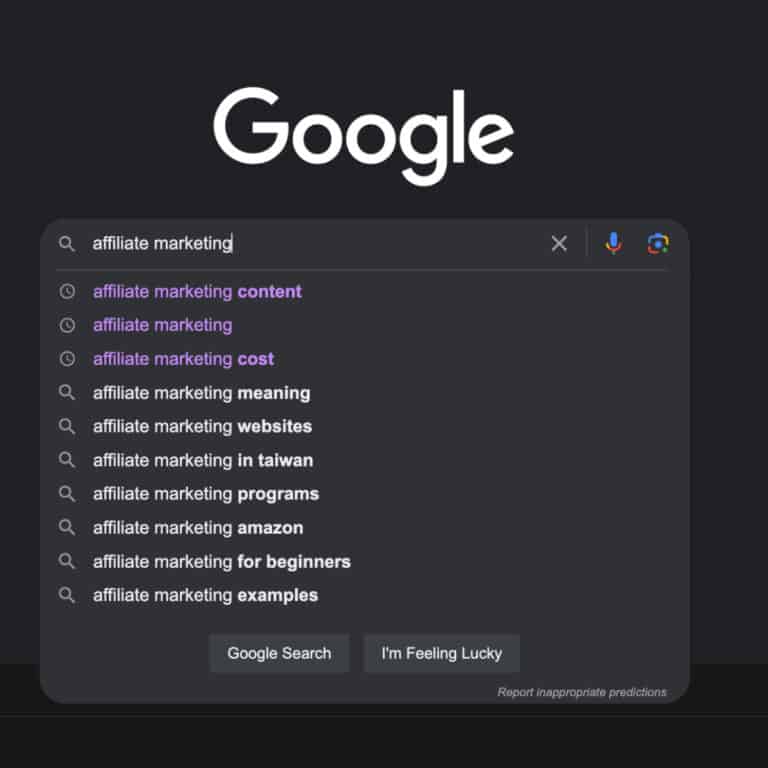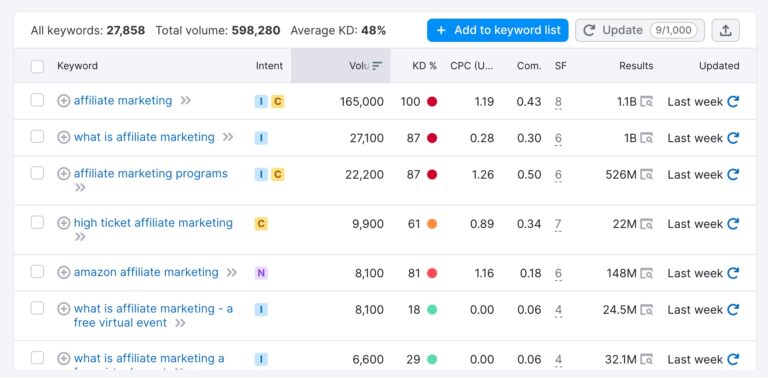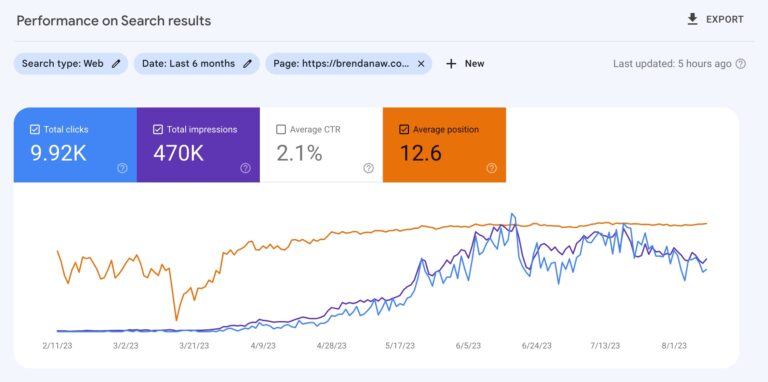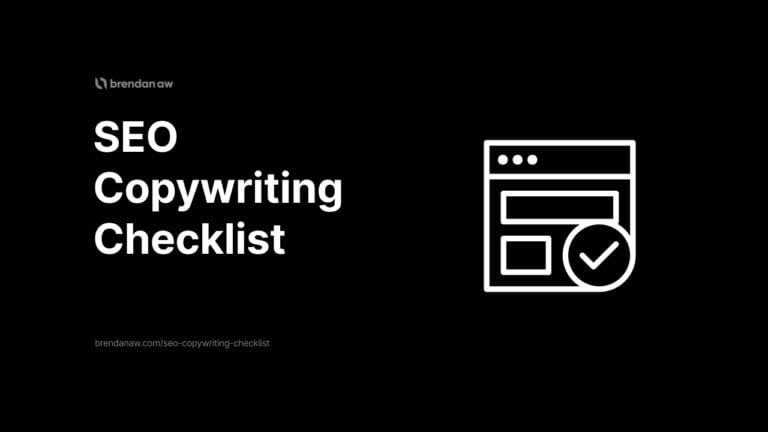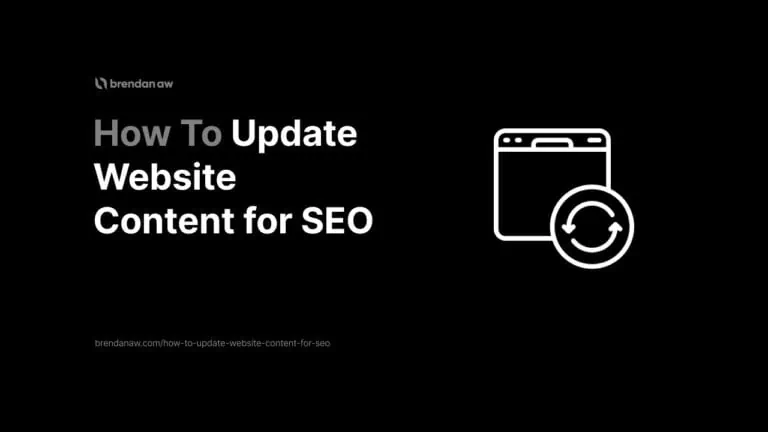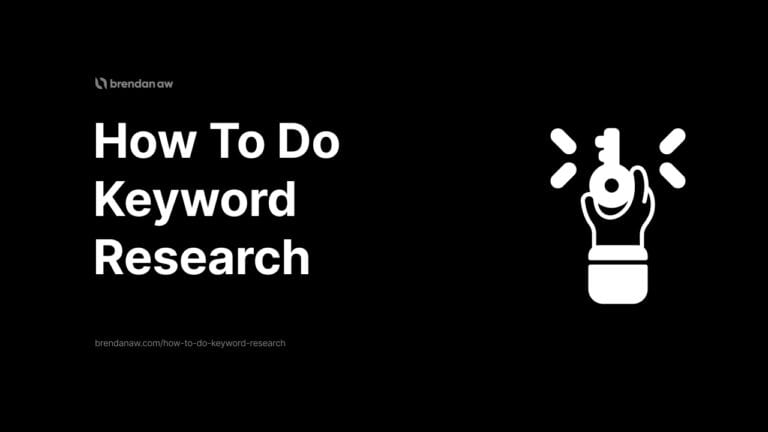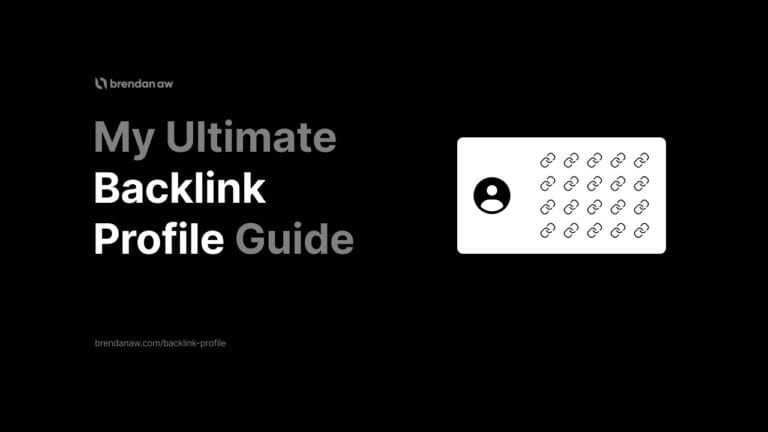If you’re a creator starting a blog or publishing newsletter issues on your site… listen up.
You can’t produce any content you want.
The goal is to rank in search engines and attract high buyer intent traffic.
Else… why are you wasting your time?
That’s the whole point behind SEO content.
You’ll learn:
- What it is
- Why it’s important
- The different types
- How to develop an SEO content strategy
- How to create it
- How it fits into your overall SEO strategy
It’s going to be long…
But well worth your time.
What Is SEO Content?
SEO Content is any type of content designed with the intention of attracting search engine traffic to your website pages.
The goal is to appear on Search Engine Result Pages (SERPs) for the most relevant queries possible.
Not just any page. Page one…
Else you’re better off writing in a notebook.
It requires more strategy and foresight compared to regular content that only:
- Educates
- Entertain
- Inform
Google upholds certain quality guidelines in determining which pages to rank high…
And these are governed by their E-E-A-T guidelines.
Why Is SEO Content Important?
Content and Search Engine Optimization (SEO) are food for search engines.
Without either… it’s like trying to catch fish without bait.
You won’t get their attention to rank and index your web pages.
An average of 53.3% of all traffic comes from organic search…
And ever wondered how many websites there are?
There are at least 1.13 billion websites in 2023.
But only 200 million are actively managed and visited.
That’s still a ton of competition.
Want traffic to your website?
You need SEO content.
Here are key reasons why:
- Increases your rankings: Optimizing your content for SEO helps your website rank higher in search engine results pages (SERPs). making it more visible to users and increasing the likelihood of attracting organic traffic.
- Increases website traffic: Higher rankings results in more clicks and you guessed it… more organic traffic. Plus, it’s free.
- Increases backlinks: You are more likely to get cited by those visitors and earn backlinks if your content is valuable and unique.
Types of SEO Content
Think of SEO content as a toolbox. The different types of content are the tools.
You choose which type of tool to use depending on the task you need to do.
Below are some of the main types of SEO content:
- Short-form content: Less than 1,000 words. These are usually easily and quickly consumed content pieces. Examples are repurposed newsletter issues, news articles, and landing pages.
- Long-form content: Longer than 1,000 under 3,000 words. This is best for in-depth articles or guides about a certain topic. You’d use this to rank your content for more easy to medium competition keywords.
- Blog content: It used only to be a type for people to share their thoughts. But now… using blogging to help SEO is 100% mandatory. It’s the only way to incorporate keywords within value-packed content to rank on Google.
- Pillar content: Typically exceeds 3,000+ words and forms the cornerstones of your site. It’s called “pillar” because it acts as the gateway to your main topics that are usually optimized for the most competitive keywords. It’s also supported by a network of related cluster content, which can effectively increase the likelihood of ranking the entire content hub.
- Evergreen content: These are content pieces that don’t need to be updated regularly or at all. For example, an article on “What is SEO?” likely isn’t changing. But “best [product type]” must be refreshed every year at least.
- Data-led content: In a sea of repurposed and generic information, data-led content stands out. Plus points if it’s based on new/original research. People tend to cite and backlink this type of content. This goes a long way in making your site look authoritative to Google by receiving votes of confidence from others.
Developing an SEO Content Strategy
“If you fail to plan… you plan to fail.”
I’m sure you heard this phrase before.
Going into this without an SEO content strategy is a one-way ticket to wasting your time and money.
Why?
Because none of your content is going to rank and get traffic.
Though a little outdated…
A study conducted by Ahrefs in 2020 found that 90.63% of content gets ZERO Traffic from Google.
We can assume that number is higher now that SEO isn’t as easy as before.
Here’s an overview of how to develop an SEO content strategy.
1. Define Your Goals
Every strategy starts with a clear goal.
What are you trying to use SEO content for?
- Earn affiliate income?
- Consulting bookings?
- Digital product sales?
- Ad revenue?
Every single one has a different roadmap.
Let’s take myself as an example.
I decided to start affiliate marketing as my main monetization method.
My focus is creating commercial review articles that are highly optimized for conversions.
These are supported by informational and helpful content.
But if I wanted to monetize purely through Ads…
Then all I’ll be doing is writing articles with low competition and high-volume keywords for the most traffic.
2. Understand Your Audience
Ever wondered why some content just… clicks?
It’s because they know everything about their audience.
They get inside their heads. They address their burning questions.
Start by building your audience persona.
Understand their:
- Needs
- Desires
- Pains
These are the prerequisites to crafting content that resonates.
If you’re targeting fitness enthusiasts…
They might be searching for “best protein shakes.” Not “how to knit a sweater.”
Need more information?
- Hang around forums
- Check out Q&A sites
- Run surveys
You have to be part of the culture and niche to truly know who these people are.
3. Understand Keyword Research
Keyword research is the backbone of SEO content.
If you don’t learn it or master it…
I’m sorry. But you’re just creating “content.”
Anyone can do that.
If you want to rank on Google and be discovered by searchers…
Keywords have to be used.
NO negotiation.
4. Prioritize Site Structure
Consider your website a supermarket.
It needs organization and easy navigation.
Imagine entering and finding no labeled aisles.
You could ask the staff…
But no one will do that on your site.
This matters because it:
- Enhances user experience
- Makes it easier for Google to understand your site
- Avoids keyword cannibalization
Structure all content around main and sub-topics.
People often refer to these as cornerstone or pillar content and cluster or supporting content.
This organization guides users through a marketing funnel that naturally aligns with their awareness stages.
What does this do?
Increases your conversations as users are served the appropriate content.
It also lets web crawlers use their crawl budget efficiently…
This leads to:
- Faster indexing
- Better visibility
- Higher rankings
5. Use SEO Copywriting
Start by reading my article on why copywriting matters. But remember to come back.
Copywriting seeks to persuade.
It’s the critical difference between regular writing.
And no matter what kind of creator you are…
All your content should engage and compel readers to take action.
Be it to:
- Sign up for your newsletter
- Click your affiliate links
- Buy your digital products
It should be the foundational aspect of all writing in your content while optimizing for SEO.
Bookmark my SEO copywriting checklist for reference.
6. Create a Content Calendar
No matter how efficient you are…
You will fall off without a content calendar.
It’s a must to produce a consistent flow of content to feed search engines and humans.
Here’s a little peek into my content calendar on Notion.
While I don’t exactly follow the due dates…
It helps me stick to an organized schedule without stressing over what to create.
7. Promote Your Content
You might be thinking…
“Brendan… but isn’t it in the algorithm’s hands after I publish?”
Yes and no.
Assuming you have done everything right.
Relying only on Google or other search engines for traffic is dumb.
ALWAYS diversify.
Share your articles via:
- Social media
- Newsletter
- Cold emails
- Other creators
You must take the initiative to promote your content…
Because you don’t want your website’s fate to be in their anyone’s hands.
8. Stay Updated with SEO Trends
Continuing from the section above…
SEO isn’t static.
Algorithms change. New trends emerge. User search behavior changes.
If you’re stuck in your own bubble…
You’ll never have an advantage on the SERPs.
9. Analyze and Refine
Your job doesn’t end after publishing.
You must:
- Track your content performance using analytics tools
- Identify areas of improvement
- Tweak your SEO content strategy accordingly
Numbers don’t lie.
Content is a living and breathing entity…
It needs constant nurturing.
Your competitors aren’t lazing around too.
If you don’t keep up. They’ll overtake you.
That’s why you must regularly update and refresh content to stay competitive.
Google rewards content that is:
- Relevant
- Accurate
- Comprehensive
- Optimized
How To Create SEO Content?
You might still think creating SEO content is for search engines…
But that’s only half the equation.
It must be for both humans and algorithms.
Satisfy search intent and game-changing search engine performance will naturally follow.
Bonus points for fresh data and expert insights.
Here’s a brief overview of how to create SEO content.
- Pick a Proven Topic
- Choose the Right Content Format
- Perform Keyword Research
- Plan Your Content Outline
- Write Unique Content
- Optimize for On-Page SEO
- Analyze Content Performance
Step 1: Pick a Proven Topic
Creating any content always begins with finding the right topic.
But what’s the right topic?
It’s obviously whatever your target audience might be interested in.
I’ll repeat that.
Whatever YOUR target audience is interested in.
NOT YOU.
So how do you find a proven topic?
Here are a few ways…
- Reddit: Find subreddits where your audience hangs out. Notice any recurring questions or discussions? These are your topic ideas because they can’t find answers on Google.
- Amazon books: Search for related books with high reviews in your niche. Steal topic ideas from the chapters. That’s your validation right there.
- Course sites: Similar to Amazon books. Go to popular sites like Coursera or Udemy and take topic ideas from chapters of popular courses. If they are selling it… it’s probably not free on blogs.
- Competitors’ blogs: Why do any work at all? Your competitors already did them. They also want to cover underserved topics.
- Social media: Platforms like TikTok, Instagram and X (formerly Twitter) are always quick to trends. Content is easier to create. Spot them early and create content for your website.
The majority will use a keyword research tool to find topic ideas.
It’s not wrong…
But these tools only provide estimates.
It should be your main source of finding topic ideas but not your only one.
The real gold comes from spotting trends outside of these tools.
Step 2: Choose the Right Content Format
Imagine this…
A searcher wants a quick tutorial on “how to tie shoes.”
Would they prefer a comprehensive 3000-word article or a quick, bullet-pointed list?
I don’t know.
But Google does.
Take a look.
Turns out it was neither. The searcher wants a video tutorial.
Different search queries require different formats.
These can include:
- Lists
- How-to guides
- Roundup reviews
- Individual reviews
Always Google the query and align your format with the user’s search intent.
Step 3: Perform Keyword Research
Arguably the most critical aspect of SEO.
I can’t cover the topic of keyword research in detail because it requires a whole content hub.
But here’s the gist.
It’s the primary method to:
- Give context about your web pages to search engines
- Find out what people are searching for
- Build an SEO content plan
You can write the most epic content…
But if it doesn’t have the right keywords and search volume?
You won’t get ranked or search traffic on Google.
Here’s a brief example of how to do it.
Add a seed keyword to the Google search bar.
It’s too difficult to compete for a broad topic like “affiliate marketing.”
But Google will suggest other related long-tail keywords that might be easier to rank for.
Scan the “People also ask” section to get even more ideas.
These are usually focused on questions.
But the biggest setback of these free methods is the lack of other metrics like keyword difficulty and volume.
These will tell you:
- How many people are searching for it
- Can you rank for it?
- Is it worth it?
That’s why people use paid keyword research tools like Semrush.
Step 4: Plan Your Content Outline
Look at the top SERP articles first.
It’s what I do… and it’s a game-changer.
Why?
Because they’re Google’s top picks for a reason.
Here’s what to focus on:
- Spot common headers: If multiple competitors use them… you should too.
- Notice their header structure: See listicle items as H2s? Don’t bury yours in H3s, H4s, etc.
- Observe header positioning: Some articles hit the search intent right at the top… delivering quick value. It’s all about time to value. If readers get answers fast. They stay. Pushing crucial info down? Risky move.
- Check word count: It’s not a strong ranking factor. But it’s a hint of depth and detail.
Now combine all the information up till now into an SEO content brief before writing a single word.
Step 5: Write Unique Content
If you want your content to rank…
It can’t be great. It must be the BEST.
Aggregating the top 3 articles is a good first step.
But it’s not good enough.
Because all you’re doing is curating.
You need to be known for your unique content if you’re trying to build authority and a brand.
Not anyone else.
Here’s what you should do on top of combining:
- Include original research: This can come from interviews, experiments, case studies, polls or surveys.
- Give your own opinion: No one has this because it’s from you.
- Add more: More sub-topics, list items, steps, ideas, alternatives, whatever.
- Support with other media: Add unique images, videos, and audio transcripts.
- Use copywriting techniques: Take some notes from my copywriting tips to make your content way more engaging and compelling to read.
Step 6: Optimize for On-Page SEO
Now that your content is written…
It’s time to add more juice by optimizing SEO content for search engines.
Here are some best practices.
- Title Tag: The main title that appears on the SERPs. This should be under 60 characters.
- Meta Description: A summary of the page content. Google often rewrites this but still gives the searcher a teaser. Keep it under 160 characters.
- URL Structure: Incorporate the main keyword here separated by only dashes if there are spaces. No funny symbol. No numbers. No extremely long sentences.
- Keyword Usage: Use an SEO content optimizer tool like SurferSEO or NeuronWriter to figure out the right semantic keywords to include besides the main one.
- Internal Links: Include links to your money pages, content hub and other relevant URLs.
- External Links: Links that go to reputable and credible sites only.
- Image Optimization: Ensure images have descriptive file names (separated by dashes too) and alt tags (contain keywords but only readable for the visually impaired). Also, compress them for faster loading with a tool like ShortPixel if you’re using WordPress)
Step 7: Analyze Content Performance
Analyzing your SEO content’s performance is the last step.
After a few months or so…
I recommend tracking the following metrics with Google Search Console:
- Clicks
- Impressions
- Search rankings
Then track your pages’ organic traffic with Google Analytics.
Needless to say…
You don’t have to do anything if they all are trending upwards.
But if it’s going down…
It’s time to update content for SEO.
These can involve:
- Updating facts and statistics
- Removing or adding text
- Adding more media
- Including more keywords
This entire process will go on indefinitely.
SEO is a marathon that never ends.
Create. Analyze. Improve.
Do that on repeat to succeed.
How SEO Content Fits in Your Overall SEO Strategy?
SEO content doesn’t exist in a vacuum…
It’s the foundation of your entire SEO game plan.
Here’s how it fits into the bigger picture.
1. Ranking For Target Keywords
Let’s be clear…
The goal is to make money.
And as mentioned…
Affiliate marketing will be one of your primary methods for making money as a creator.
SEO content helps you rank for specific commercial keywords like “Best [Product Type].”
These are usually product roundup articles where you can insert affiliate links and earn a commission.
Without which…
Your content won’t rank. You won’t get traffic. You won’t make affiliate commissions.
2. Earning Backlinks
Think of SEO content like food at a restaurant.
Backlinks are like reviews and recommendations from patrons and critics.
You can have dishes better than Gordon Ramsay (content).
And you might also get some walk-ins (web traffic).
But if nobody endorses it.
Traffic won’t grow.
SEO-optimized content helps grow your backlink profile by attracting links from credible sites…
And improving your authority and search rankings in the process.
A Backlinko study also found a positive correlation between the number of backlinks and higher rankings.
3. Supporting Technical SEO
While there are clear differences between content SEO and technical SEO…
There’s hardly a point for either to exist without the other.
Content SEO shapes the message. Technical SEO ensures its deliverability.
For instance…
Writing an article about the “best AI writing software” will dictate how it’s structured under the broader topic of AI content.
Content SEO teaches you to optimize it…
While Technical SEO involves giving it content hierarchy in the site architecture.
This ensures efficient crawling and indexing by search engine bots.
SEO Content (FAQs)
What Should I Avoid When Creating SEO Content?
When creating SEO content, avoid using the same meta title and descriptions for multiple pages.
These pages could compete with each other, making it harder to rank.
Also, make sure to always include the target location for Local SEO.
Does Changing Content Affect SEO?
Yes, changing content has an impact on SEO. Google and other search engines will re-evaluate that page based on the new content.
However, as long as you keep relevant keywords and semantic context, you can still stay on the top pages.
What Are the Benefits of Updating SEO Content?
Updating SEO content gives you the opportunity to:
• Show Google you are active
• Target newer and relevant keywords
• Provide factual recent content for users
• Outperform lazy competitors
This translates to increased traffic in the long run.
Why Is Keyword Research Essential in SEO Content?
Keyword research is finding and analyzing specific search terms that people enter into search engines.
These are usually metrics like keyword difficulty and search volume.
And it’s important in SEO content because it helps creators validate content ideas that can attract search traffic.
Are Meta Descriptions Important in SEO Content?
Meta descriptions are important in SEO content as they provide a brief summary of a webpage’s content and are displayed in search engine results pages (SERPs).
While not a direct ranking factor…
Well-written meta descriptions can improve click-through rates (CTRs).
This leads to increased organic traffic and potentially better search rankings.
How Often Should I Publish Content To Stay on Top of SEO Rankings?
There’s no specific answer to how often you should publish content.
But constantly providing fresh content to your readers signals search engines that your website is maintained with regular updates.
This can increase visibility and chances of ranking on SERPs.
The key is consistency.
I recommend posting at a minimum once a week and scaling from there.
Are Infographics Effective in SEO Content Strategies?
Absolutely. Infographics are a great way to present complex information in a visually appealing and digestible format.
They’re not only more engaging…
But are also easily shared on social media platforms.
This helps to drive more traffic to your site.
You can also rank in image search if you optimize your Alt text and file descriptions for relevant keywords.
To Sum It Up
I hope you enjoyed my complete guide to SEO content.
Using SEO to create content that ranks should be a core strategy in your overall content strategy as a creator.
It should be designed with humans in mind.
Not just search engines.
Including unique information and personal perspectives will help your content stand out.
Keep all information updated and relevant as well.
Follow everything you learned here…
And I promise you’ll get more traffic to your website or blog.





